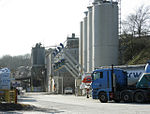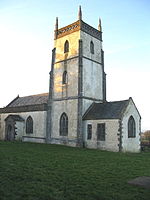Binegar railway station
Beeching closures in EnglandDisused railway stations in SomersetFormer Somerset and Dorset Joint Railway stationsMendip DistrictPages with no open date in Infobox station ... and 3 more
Railway stations in Great Britain closed in 1966Railway stations in Great Britain opened in 1874Use British English from December 2016

Binegar railway station was a station on the Somerset and Dorset Joint Railway in the county of Somerset in England. Opened on 20 July 1874, the station consisted of two platforms, with a building on the down platform. There was a substantial goods yard with two sheds and sidings, controlled from a 24 lever signal box. Being the first station north of the line's summit at Masbury Binegar was also where locomotives used as banking engines on north-bound trains would drop off and cross the line ready to return south. The station closed to goods in 1963: passenger services were withdrawn when the SDJR closed on 7 March 1966.
Excerpt from the Wikipedia article Binegar railway station (License: CC BY-SA 3.0, Authors, Images).Binegar railway station
Mendip
Geographical coordinates (GPS) Address Nearby Places Show on map
Geographical coordinates (GPS)
| Latitude | Longitude |
|---|---|
| N 51.24068 ° | E -2.55146 ° |
Address
BA3 4UQ Mendip
England, United Kingdom
Open on Google Maps







